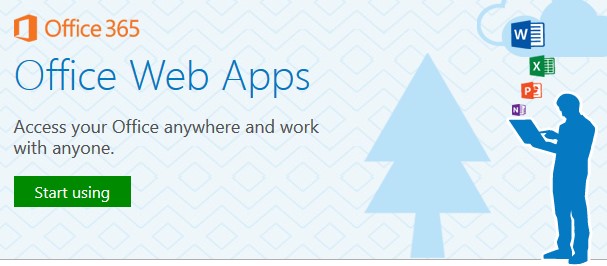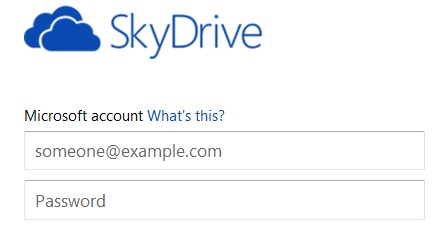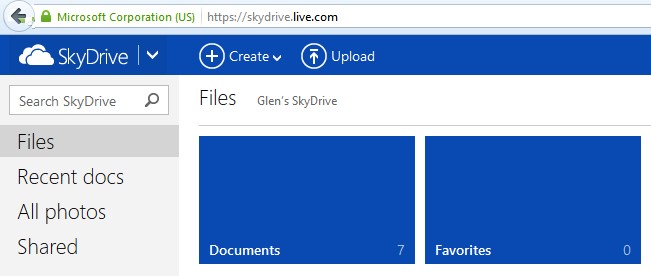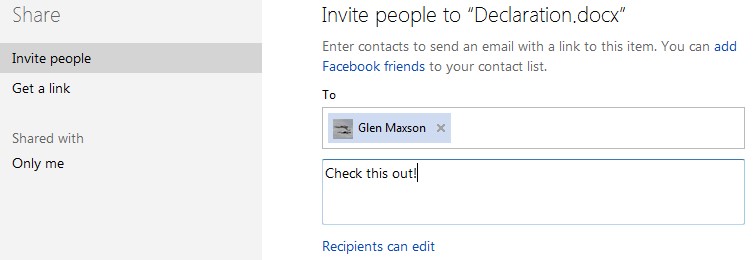So you decided this time ‘round you weren’t going to pay the ‘Microsoft Tax’ to upgrade your Office products. You might have chosen to go with OpenOffice or LibreOffice, or maybe even use Apple iWork products like Pages and Numbers, which Apple now provides for free. But there’s still the conundrum that many people we interact with each day are using Microsoft Office products and converting into and out of different file formats (.odt, .gdoc, .pages, .wpd…) supported by non-Microsoft products can be a pain.
So what if I told you, you could use Microsoft Word, Excel, PowerPoint, and even OneNote for free. You’d say, no way. Way! When you create a Microsoft ‘Live’ account, not only do you get 7gb of free storage on Microsoft’s SkyDrive (soon to be renamed OneDrive), but you also get access to Microsoft’s Office Web Apps for free. So far, you have to agree, the price sounds pretty good – free email, free cloud storage and free apps. So what’s the catch?
From my perspective, there is no catch. Microsoft wants to steal you back from Google who also offers all these things for free. And maybe when you come back, you’ll actually buy stuff from Microsoft. It could happen…
OK, so now you probably want to know what Microsoft’s Office Web Apps are and how to use them. Read on:
Office Web Apps – what are they?
Microsoft Office Web Apps is the web-based version of the Microsoft Office productivity suite. It includes the web-based versions of Microsoft Word, Microsoft Excel, Microsoft PowerPoint and Microsoft OneNote. The web applications allow users to access their documents within a web browser and collaborate with other users online – for free.
And how do I use them?
After you create your Microsoft Live account, head over to the Office Web Apps page and select the ‘Start using’ button.
You’ll be asked to sign into your Live account the first time you visit Web Apps:
Then this is what you’ll see:
This is your SkyDrive dashboard. For the sake of this tutorial, we’ll select the ‘Documents’ tab. From here, you’ll either be able to access your SkyDrive to view or edit documents that already exist, or ‘Create’ a new document. This is what it looks like inside the Documents tab:
These are documents that were created previously in Web Apps, or were created outside Web Apps and were uploaded into my Web Apps Documents folder from my PC. Either way, the documents appear the same regardless of whether they were created by locally installed Microsoft Office or Office Web Apps, and all are in the latest Microsoft Office formats.
Next, we’ll look at document creation in Office Web Apps. Here’s what the window looks like when you start to create a new Word document:
All the essential Word editing controls are here, so if you’re familiar with recent versions of Microsoft Word, you’ll feel right at home. The only two things you’ll need to get used to are the lack of a ‘Save’ button (there is no Save in Web Apps because your document is always being saved to the cloud as you edit it), and the fact that your document now lives in the ‘cloud’/SkyDrive. Once you understand how to get files in and out of the SkyDrive, and how to access the SkyDrive when trying to attach a document to an e-mail, for example, then this model will become fairly intuitive.
Besides Word, Office Web Apps also supports Excel and PowerPoint document creation and editing, and OneNote, of which I’m not a big fan (long story). Most people will use Web apps for Microsoft’s 3 most popular Office apps – Word, Excel and PowerPoint.
Alright then, now that I created a document in Web Apps, what can I do with it? Let’s head back to the SkyDrive and the Documents folder for a moment. Once there, one thing I can do is select a file and download it to my local system/storage. This is useful if I want e-mail the document to someone, or edit the document off-line on my PC or laptop. Or, better still, I can simply ‘Share’ the document with others:
One really interesting feature of document sharing is that you can permit others to edit your document (even at the same time you’re editing it). There are controls to limit who can edit a document, so it appears the document collaboration model has been well thought out and could be a very useful feature and ‘selling point’ for Web Apps.
Also, if there are documents on my laptop or desktop that I’d like to access via Office Web Apps, uploading them to the SkyDrive is a snap. This window will appear when ‘Upload’ is selected:
Simply drag the file(s) you want to upload into this box and in a few moments they will appear online and be available to view, edit, and share. If the SkyDrive icon is already on your desktop (as it is with Windows 8), then the task is even easier. Here you can simply drag and drop files into the SkyDrive on your desktop and they will sync with the cloud automatically.
I have to admit, I have known about Office Web Apps for a few years, but it wasn’t until a few days ago that I realized how useful is could be for document creation and editing on my ChromeBook. The ChromeBook is a Google invention and as such, Google Docs is the intended destination for people interested in document creation on a ChromeBook. Google Docs are great and Google has done a great job integrating their e-mail, document creation and cloud storage features for a seamless user experience.
However, many ChromeBook users still live within a Microsoft ecosystem, where many of our e-mail recipients expect to receive documents in current or legacy Microsoft formats. In this case, Office Web Apps solves a critical problem for the ChromeBook user. With Outlook.com, SkyDrive, and Office Web Apps all available to the ChromeBook user, the Microsoft-centric user can live quite well on a ChromeBook with little compromise when compared to using a traditional Windows platform running the current Microsoft Office apps (which is guaranteed to cost considerably more than the ChromeBook equivalent). That said, ChromeBooks work best in a wifi-connected world and not as well in an off-line mode.
Since there is no off-line mode for Office Web Apps, one would use Google Docs in off-line mode and download the .gdoc document to the ChromeBook’s local storage (which performs a conversion to .docx if desired). Then when the ChromeBook reconnects to wifi, transfer the Word document to the SkyDrive and editing in Office Web Apps can be done.
In summary, with a little effort one could live comfortably in the Microsoft world without having to pay the Microsoft tax. Office Web Apps could an important part of this strategy. I’m willing to give it a try. Are you?







